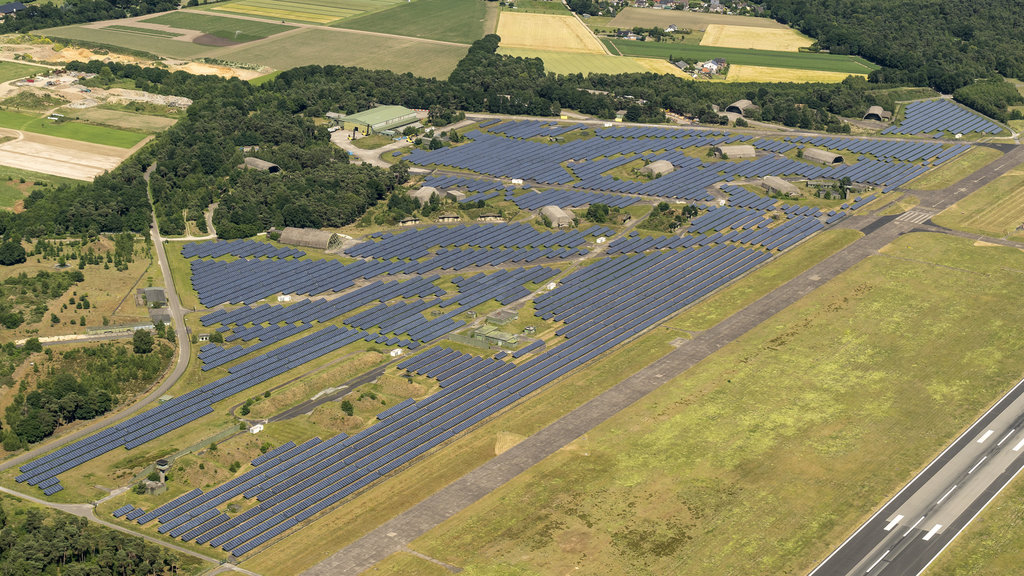Comment
Unlocking the potential of airport real estate
Sam Folley,partner at Trowers & Hamlins, highlights how airport operators can unlock the full potential of their land for logistics and ESG purposes.

Airports and logistics warehousing have always gone hand in hand. The land surrounding an airport and within its boundaries is likely to be well-connected and close to major roads.
But whilst being accessible to urban centres, airport real estate will be less attractive to residential developers. It naturally acts as a storage location for goods which have arrived by air, before transfer by lorry, and vice versa.
Whilst being accessible to urban centres, airport real estate will be less attractive to residential developers.
There have been several recent announcements demonstrating a number of airport operators and developers recognise the opportunities here.
Examples include planning permission for Columbia Threadneedle to develop a new industrial estate (and warehouses) next to London Stansted Airport, Hounslow Council's proposal in its Local Plan Review for a major new industrial estate on Hatton Fields next to London Heathrow, and the development of CGX Connect at Gloucestershire Airport.

Sam Folley, partner at Trowers & Hamlins
Logistics developer Pannatoni intends to develop an 80,000 square-foot last-mile logistics site near London Heathrow on brownfield land acquired from CBRE IM, as well as 257,000 square-feet of logistics warehousing within the boundary of Brighton City Airport.
Of more significance perhaps is the East Midlands Freeport announced by the UK Government in 2021 made up of the East Midlands Gateway and Industrial Cluster Tax Site, which surrounds East Midlands Airport.
Can developers unlock even more potential?
One stone that seems to be largely left unturned is that airport operators and property companies can learn a lot from each other, and working together can create significant value.
Airport operators are, naturally, experts in running an airport. They also tend to own a lot of real estate, but the management of that is ancillary to their main business. Airport operators may also be able to supply the tenants, who could already be lurking in unsuitable premises elsewhere on the airport.
Property companies can lend their expertise to the development and management of airside land. The combination of these two areas of expertise can add real significant value to logistics property.
Take an area of undeveloped or brownfield land within the airport boundary. for example. The airport owner may not have even considered developing it, or simply lack the expertise and resources to do so.
Airport operators may also be able to supply the tenants, who could already be lurking in unsuitable premises elsewhere on the airport.
A logistics developer can bring all the expertise surrounding designing, planning, building and letting a warehouse on this land. The airport operator can add to that integration into the airside of the airport, with the direct access to cargo planes that will bring, as well as advise on exactly how the building will be built and operated within the existing airport regulatory constraints.
Recent changes to public safety zones around runways have potentially freed up land for such development. In 2021, the Department for Transport simplified the PSZ policy so that the Controlled Zone (in which there is a presumption against development) changed to 140m wide and 1,000m long, (or 1,500m if there are over 45,000 movements), and the Restricted Zone (where people are not expected to live or have their workplace) changed to 75m wide and 500m long.
This replaced a complex system of zones that changed from time to time based on worldwide crash data. The result, on balance, is that land has been released from PSZ restrictions and freed up for development.

A large Amazon warehouse fulfilment centre with loading bays at The East Midlands Gateway. Credit: Clare Louise Jackson/Shutterstock
Solar panels: real estate development is aiding ESG
Airports cannot expand without confronting and dealing with environmental, social, and corporate governance (ESG) head-on, and whilst there is only so much that airports can do about the carbon footprint of the planes that use them, the key lies in what they do with their real estate.
The property industry is further advanced in respect of ESG in real estate than the airport industry and the latter, therefore, has an instant source of expertise to tap into. Such expertise could not only enhance the value of the asset but also add to the overall ESG credentials of the airport.
Photovoltaic (PV) is part of this, and another synergy between airports and nearby logistics warehousing. Both lend themselves well to PV development as examples at Glasgow, Newcastle, and Stansted airports will show us.
The property industry is further advanced in respect of ESG in real estate than the airport industry.
Solar PV from airports and logistics warehouses can feed power to a local network, or to the grid, enhancing income from the sites. Moreover, they can provide power to their vehicular users. Both are reliant on intensive vehicle use and a time where the majority of airport drop offs and hire car fleets, and goods vehicles servicing warehouses, switching to electric vehicles, is perhaps not that far off.
Lawyers have a role to play in unlocking all this. They can advise on a number of options for an airport operator and a developer to come together. This could be as straight forward as a simple lease where the airport operator simply enjoys a rental, or as involved as a joint venture or forward funding agreement, where each party takes on a number of obligations.
Logistics developers and investors will be familiar with such arrangements, but airport operators should not be put off by their potential complexity. Ultimately, such arrangements are the best way to unlock to most value

Aerial view of huge solar park next to a runway of an airport in the city of Weeze, Germany